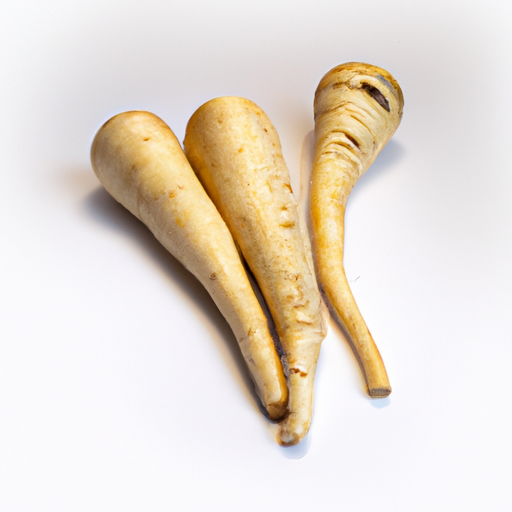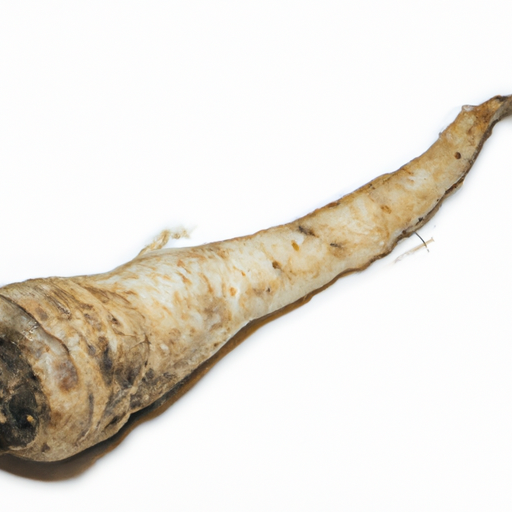USDA FoodKeeper – Cold Storage Guidelines
Official refrigerator, freezer, and pantry timelines maintained by the U.S. Department of Agriculture.
Visit USDA FoodKeeperWith their sweet, earthy flavor and versatility in both savory and sweet dishes, these root vegetables are a hidden gem in the culinary world. To enjoy their crisp texture and delightful taste, be sure to store them in a cool pantry and use them within 14 days, as they don’t hold up well past their expiration.
Parsnip may remain safe to consume after its expiration date if it has been stored correctly at the proper temperature and shows no signs of spoilage. However, risk increases over time, especially if storage conditions were not optimal.


Pantry
32-40°F (0-4°C)
Store in a cool, dark place
Proper airflow and humidity control can extend produce freshness. Using produce storage containers (Amazon) in the refrigerator helps regulate moisture and slow spoilage.
14 days
Mold, Soft spots, Discoloration
Roasting, Soups, Stews
Carrots
Sure thing! Expiration dates and best quality dates for parsnips can be a bit confusing, but let me break it down for you. Expiration dates on parsnip packaging indicate when it's no longer safe to eat due to potential spoilage or food safety concerns. Once the expiration date has passed, it's best to toss them out to avoid any risks. On the other hand, the best quality date refers to the period when the parsnips are at their peak freshness and flavor. Eating them before this date ensures you enjoy them at their best. However, after the best quality date, the parsnips may start to lose their flavor and texture, but they are still safe to eat for a little while longer. Personally, I'd recommend using your judgment and senses. If the parsnips look and smell fine past the best quality date, they are usually okay to eat, maybe just needing a bit more cooking to freshen them up. But if they look off or have an unusual odor, it's better to err on the side of caution and discard them.
To determine if a parsnip has gone bad, look for signs of mold, discoloration, or shriveling on the skin. A bad parsnip may also emit a sour or off smell. Additionally, a soft or slimy texture indicates spoilage, and the vegetable should be discarded.
Hey there! Let's chat about Parsnip and food safety. While Parsnips are delicious and nutritious, they can pose some risks if not handled properly. One key risk is foodborne illness. Parsnips can harbor harmful bacteria like E. coli or Salmonella if not washed and cooked thoroughly. Symptoms of foodborne illnesses include nausea, vomiting, diarrhea, and stomach cramps. So, it's super important to handle Parsnips with care. To keep things safe, always make sure to wash Parsnips thoroughly under running water before peeling or cutting them. Use clean utensils and cutting boards to avoid cross-contamination. When cooking Parsnips, ensure they are cooked to the right temperature to kill any harmful bacteria. For extra safety, store Parsnips in the refrigerator to prevent spoilage. If you notice any signs of spoilage like mold or a slimy texture, it's best to toss them out to avoid getting sick. Remember, a little caution goes a long way in enjoying your delicious Parsnips safely! Stay safe and happy cooking!
Hey there! Parsnips are such a versatile and delicious veggie, but they can be a bit tricky to store. Here are some storage hacks and pro tips to keep your parsnips fresh and tasty: 1. **Store in a cool, dark place**: Like many root vegetables, parsnips prefer a cool and dark environment. A cellar or a vegetable drawer in your refrigerator works well. 2. **Keep them dry**: Moisture can cause parsnips to rot quickly. Wrap them in a paper towel before placing them in a plastic bag in the fridge to absorb excess moisture. 3. **Cut off the greens**: If your parsnips come with greens attached, make sure to remove them. The greens can draw moisture from the root, causing them to go bad faster. 4. **Freeze for later**: If you have too many parsnips on hand, you can peel, chop, blanch, and freeze them for future use in soups or stews. 5. **Check for freshness**: Regularly inspect your parsnips for any signs of spoilage, such as mold or shriveling. Use up any that show signs of aging first to prevent waste. I love roasting parsnips with honey and thyme for a delicious side dish. Enjoy your parsnip adventures!
Hey there! Let's chat about parsnips - the unsung hero of the root vegetable world! Did you know that parsnips have been around for centuries? They were a staple in Roman and Greek diets. Even Shakespeare mentioned them in one of his plays! In medieval times, parsnips were used as a sweetener before sugar became widely available. They were loved for their natural sweetness and nutty flavor. Nowadays, they often get overshadowed by their more popular cousin, the carrot, but they pack a nutritional punch! In some cultures, like in Ireland, parsnips are a symbol of good luck and prosperity. They are often included in traditional dishes during special occasions. Surprisingly, parsnips are also super versatile! You can roast them, mash them, make soups, or even bake them into cakes for a unique twist. So next time you're at the grocery store, pick up some parsnips and give them a try. Who knows, you might just discover a new favorite vegetable!
Parsnips stored at room temperature can last for about 1 to 2 weeks. However, prolonged exposure to room temperature can lead to quicker spoilage. It's best to store Parsnips in a cool, dark place to extend their freshness.
Yes, Parsnips can be frozen to extend their shelf life. To freeze Parsnips, peel and cut them into desired sizes, blanch in boiling water for a few minutes, cool in ice water, drain, then pack in airtight containers or freezer bags. Properly frozen Parsnips can last for up to 12 months.
Cooking Parsnips can affect their expiration date by altering their texture and flavor. Once cooked, Parsnips should be refrigerated promptly and consumed within 3 to 5 days for the best quality. Proper storage after cooking helps maintain their taste and nutritional value.
Still not sure if it's safe?
Our Food Expiration & Storage Quick Guide helps you decide quickly — with clear keep-or-discard rules for the most common foods.
Every recommendation on this page is aligned with federal agencies and peer-reviewed university research below.
Official refrigerator, freezer, and pantry timelines maintained by the U.S. Department of Agriculture.
Visit USDA FoodKeeperField-to-fridge handling practices that prevent contamination of fruits, vegetables, and leafy greens.
Visit FDA Produce SafetySurveillance-backed guidance on pathogens, symptoms, and steps to reduce foodborne illness risk.
Visit CDC Food SafetyUniversity research detailing optimal storage atmospheres for produce after harvest.
Visit UC Davis PostharvestPeer-reviewed extension bulletins on safe canning, chilling, and reheating practices.
Visit Penn State ExtensionNeed deeper reading? Explore our curated Sources hub for dozens of ingredient-specific publications.
Reviewed by the Can I Eat Expired Editorial Team, using food safety guidance from the USDA, FDA, CDC, and university extension programs.
Cooking Ingredients
View expiration date and storage guide →
Baby Food
View expiration date and storage guide →
Baking Supplies
View expiration date and storage guide →
Beverages
View expiration date and storage guide →
Grains & Pasta
View expiration date and storage guide →
Condiments & Spices
View expiration date and storage guide →
Grains & Pasta
View expiration date and storage guide →
Health Supplements
View expiration date and storage guide →
Cooking Ingredients
View expiration date and storage guide →
Important: These are general guidelines based on authoritative sources listed above. Always use your best judgment and when in doubt, throw it out. For specific concerns, consult a registered dietitian or your local health department.
Disclosure: As an Amazon Associate, we earn from qualifying purchases. This helps support our site and allows us to continue providing free food safety information.